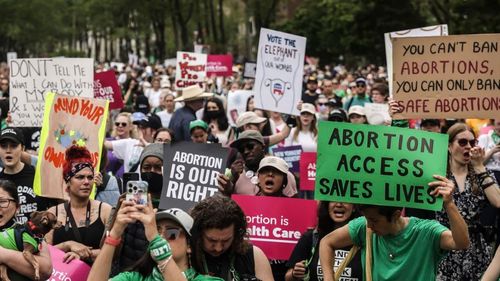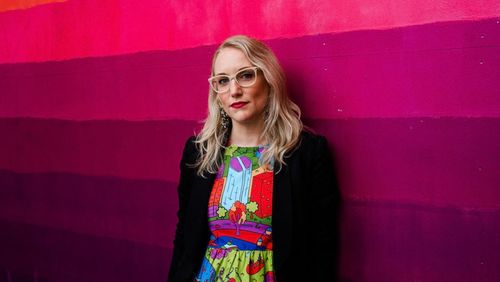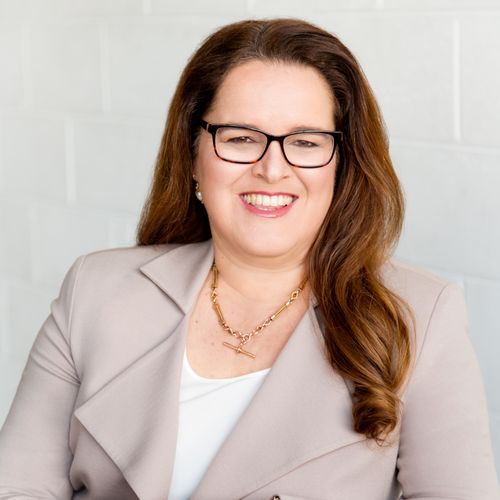Affordability greatly improves access to the service, but there are still significant barriers for those living in rural and remote parts of the country.
Some women are having to travel hundreds of kilometers to reach clinics, with just 10 per cent of Australian GPs registered to provide medical abortions.

Do you have a story? Contact the reporter on [email protected]
Legislation doesn’t equal access
Abortion rights were thrust into the forefront of conversation when the United States’ Supreme Court overturned the country’s landmark 1973 Roe v Wade decision this year.
With different rules on abortion in each state and territory, reproductive health advocacy groups say there is still some confusion about things such as how much an abortion costs, when and where you can get access to abortion services, and what types of abortion services are available in Australia.
Children by Choice chief executive Daile Kelleher said while there was general access to services across the nation, for many regional women it was a matter of postcode lottery.
“We know though with whatever legislation there is in Australia, that we have seen there has been general access to termination of pregnancy over the past couple of years,” she said.
“However, legislation doesn’t equal access.”

Explosion of protests erupt across US after abortion rights ruling
Abortion access is particularly difficult in regional and rural areas, Kelleher said.
“The most difficult thing, is that the information isn’t available for a lot of places and it’s not something you look up until you actually need it,” she said.
Consider a woman living in a remote Queensland town as an example.
That woman may have to travel “hundreds of kilometers” to access a facility which is outside their community and away from their support network.
This can be further complicated by factors like getting time off work or organizing childcare.
And in some cases navigating a violent or controlling relationship, she said.
“Any barriers to accessing healthcare outside their communities are felt more by those people who are already experiencing vulnerabilities and disadvantages,” Kelleher said.

Stigma continues to create “roadblocks and barriers” for people accessing abortions, particularly in regional and remote areas, Kelleher said.
“Some GPs you walk into and ask about abortion, or for information on access, you can get looks,” she said.
“We hear that people have been told abortion wasn’t legal and they can’t access it.
“That has huge impacts for people’s ability and confidence in asking another GP.”

‘I exist because my mom had an abortion’
Clinics closing in parts of Australia
In a statement, the organization cited financial difficulties were behind the difficult decision.
“This is not a decision we have made lightly. We have exhausted all possible options and extended our tenure for as long as we could.
“Costs continue to rise and as such our regional clinics have been functioning below the capacity required to sustain their fixed financial outgoings for some time.”
The closure of the regional abortion clinics will now make it harder for women to access the vital service, so what needs to be done?

How do we improve access to abortions?
Chair of general practice at Monash University Professor Danielle Mazza said there were a number of issues that needed to be fixed to improve accessibility as there’s a shortage of providers in the country.
She said the system needed to be easy to navigate for women, Mazza said.
“At the moment, if you are a 16-year-old girl living in a rural town in Australia, how are you going to know where to go to get an abortion if you need one?”
“You might approach a rural GP but in these areas it might be really hard to get an appointment.

“There can be a two week wait for some practices.
“The GP you might encounter may be an objector or may not be knowledgeable about abortion and may not know where to direct you or help you.”
More support and training was needed for all GPs and pharmacists across Australia, Mazza said.
“GPs are the main providers of this service for medical abortions and (visiting a GP) is a convenient approach for many women,” she said.
Currently not all pharmacies stock the medication needed for a medical abortion, Mazza said.
“More support is needed to pharmacists and GPs to provide the service and we run an online community practice to support healthcare professionals to provide medical abortions and we are looking to government to continue that funding.”
Mazza said public hospitals and health services should embed reproductive healthcare into their basic services.
“Each region needs to take accountability for the delivery of this essential healthcare practice,” she said.